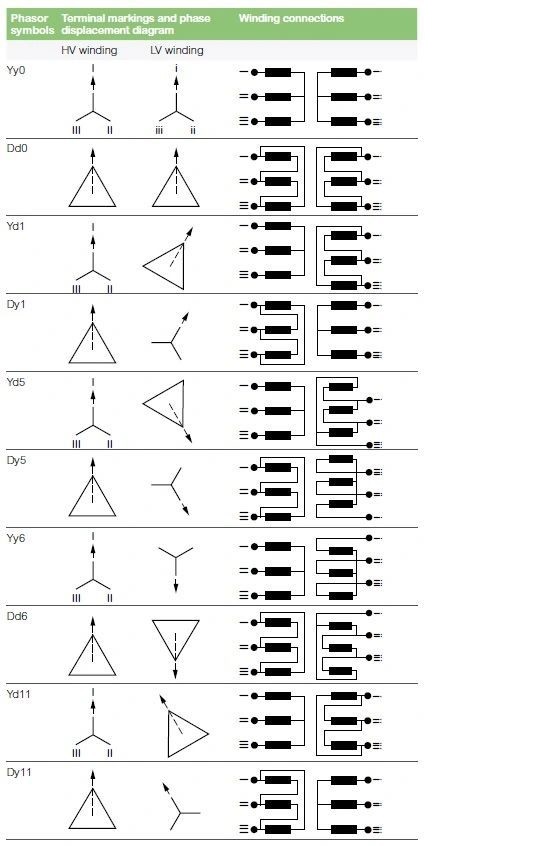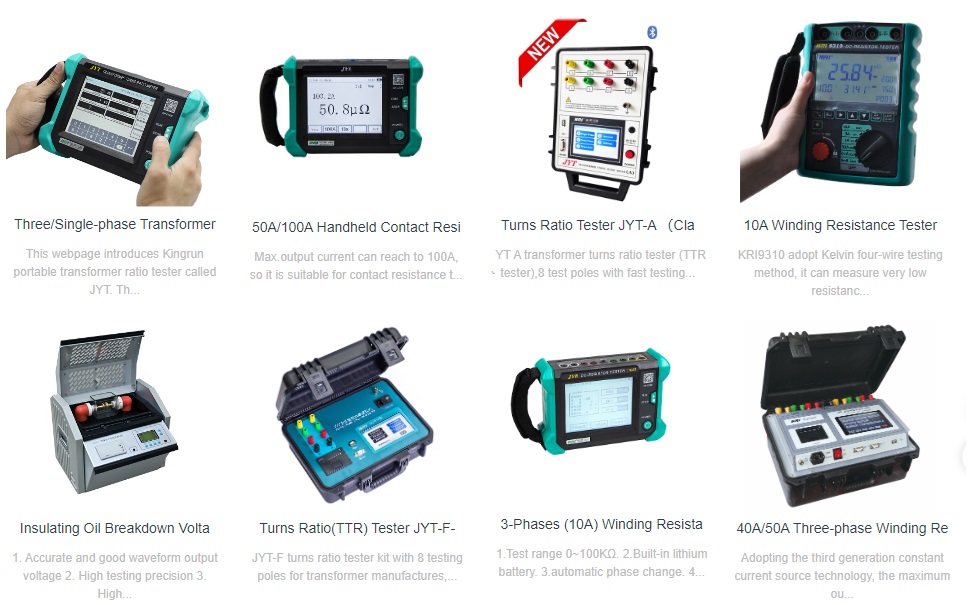Transformer vector groups play a crucial role in determining the phase relationship between primary and secondary windings, directly impacting system compatibility and performance. Understanding these groups is essential for ensuring proper transformer selection, parallel operation, and minimizing harmonic interference. This article presents a comprehensive collection of transformer vector groups along with detailed winding connection diagrams. Whether you are an engineer, technician, or industry professional, this guide will help you navigate the complexities of transformer configurations and make informed decisions for various electrical applications.
Why specify the vector group?

The Vector Group design of transformers is essential to ensure that transformers can operate correctly within different power systems and work effectively with other transformers or loads. Different vector groups have different phase relationships, and selecting the appropriate vector group is crucial for maintaining the stability, reliability, and efficiency of the power system. The main reasons include:
Characteristics of each Connection Group
1.Yy Connection Groups:
Yy0: Both the primary and secondary windings are connected in star. The corresponding line - to - line voltages are in - phase, with a phase difference of 0°. In the clock - notation method, when the primary - side line - voltage phasor is used as the minute hand pointing at 12 o'clock, the secondary - side line - voltage phasor also points at 12 o'clock.
Yy4: When the primary - side line - voltage phasor (as the minute hand) points at 12 o'clock, the secondary - side line - voltage phasor points at 4 o'clock. The secondary - side line - voltage lags behind the primary - side line - voltage by 120°.
Yy8: The secondary - side line - voltage lags behind the primary - side line - voltage by 240°. It is equivalent to the position where the minute hand is at 12 o'clock and the hour hand is at 8 o'clock in the clock - notation.
Yy6: Here, the secondary - side line - voltage lags behind the primary - side line - voltage by 180°. That is, the minute hand is at 12 o'clock and the hour hand is at 6 o'clock.
Yy10:The secondary - side line - voltage lags behind the primary - side line - voltage by 300°, corresponding to the 10 - o'clock position on the clock.
Yy2:The secondary - side line - voltage lags behind the primary - side line - voltage by 60°, similar to the situation where the minute hand is at 12 o'clock and the hour hand is at 2 o'clock.
2.Yd Connection Groups
Yd1:The primary side is connected in star and the secondary side is connected in delta. The secondary - side line - voltage lags behind the primary - side line - voltage by 30°. In the clock - notation, when the primary - side line - voltage phasor points at 12 o'clock, the secondary - side line - voltage phasor points at 1 o'clock.
Yd5:The secondary - side line - voltage lags behind the primary - side line - voltage by 150°, corresponding to the 5 - o'clock position on the clock.
Yd9:The secondary - side line - voltage lags behind the primary - side line - voltage by 270°, equivalent to the 9 - o'clock position on the clock.
Yd7:The secondary - side line - voltage lags behind the primary - side line - voltage by 210°, that is, the minute hand is at 12 o'clock and the hour hand is at 7 o'clock.
Yd11:The secondary - side line - voltage lags behind the primary - side line - voltage by 330° or, in other words, leads by 30°. It is a commonly used connection group, often used in lines where the low - voltage is higher than 0.4 kV.
Yd3:The secondary - side line - voltage lags behind the primary - side line - voltage by 90°, corresponding to the 3 - o'clock position on the clock.
3.Other Connection Groups:
Yyn0:Yyn0 (Star-Star Connection, 0° Phase Shift)
Both the high-voltage and low-voltage windings are connected in star (Y) configuration.The neutral point of the low-voltage side (yn) is usually grounded, allowing for a three-phase four-wire system, the phase shift is 0°, meaning the voltage on both sides remains in phase.Suitable for applications where the neutral grounding is essential, such as distribution transformers. However, it has poor unbalanced load handling and is susceptible to third harmonic currents, requiring proper grounding or compensation.
Yyn0 is suitable for balanced loads and is commonly used in small distribution transformers.
Dyn11: (Delta-Star Connection, -30° Phase Shift)
The high-voltage side is connected in delta (D) configuration, while the low-voltage side is connected in star (Y) configuration with a neutral point (yn),the low-voltage side voltage lags the high-voltage side by 30° (i.e., a -30° phase shift), offers better unbalanced load handling as the delta-connected high-voltage side provides a circulating path, reducing the impact of third harmonics.Commonly used in distribution systems requiring high power quality, such as industrial and commercial power supply.
Dyn11 is ideal for unbalanced loads and has better harmonic suppression, making it a popular choice in distribution systems
Kingrun Transformer Instrument Co.,Ltd.


More Transformer Testers from Kingrun
